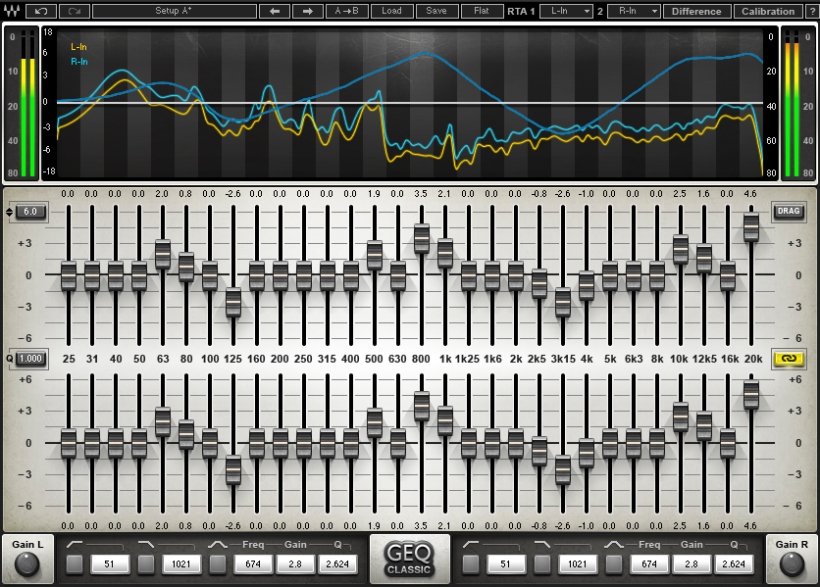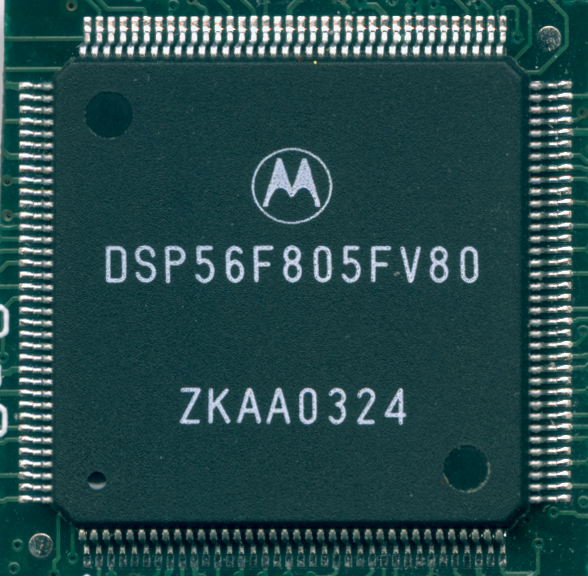Audio signal processing, sometimes referred to as audio processing, is the intentional alteration of auditory signals, or sound, often through an audio effect or effects unit. As audio signals may be electronically represented in either digital or analog format, signal processing may occur in either domain. The former domain is called Analog Signal Processing and the latter is called Digital Signal Processing. Analog processors operate directly on the electrical signal, while digital processors operate mathematically on the digital representation of that signal.
Why is Audio Signal Processing in music is worth getting into-
The recorded music industry is the engine helping to drive a much broader music industry, worth more than US$130 billion globally. This is over three times the value of the recorded music sector, and shows music to have an economic importance that extends far beyond the scope of recorded music sales.
Now, the main focus of this article is DSP. That is what is relevant to Computer Science and that is what is very hot in the music industry right now. But what DSP essentially tries to do is emulate effects that have been implemented using analog technology till now. (Only recently are we seeing effects that are unique to DSP and that trend is quickly rising). So in order to understand what we are doing using DSP in the world of music, we need to understand analog technologies.
Analog Signal Processing:
Analog indicates something that is mathematically represented by a set of continuous values. Analog signal processing (ASP) then involves physically altering the continuous signal by changing the voltage or current or charge via various electrical means.
Now, in musical terms, what we are interested is in what we hear. Here, frequency of a sound wave, its amplitude, type of wave, filtering the signal etc. is what we will modify to achieve a desired result.
Here’s one simple example: Low Pass Filter. This is one circuit which we have come across multiple times. In audio, the lower frequencies would constitute the ‘Bass’ in the sound. Hence, a low pass filter would process the input signal in such a way that only the bass of the original signal can be heard.
Here’s the circuit:

Here, we have a popular distortion pedal called the Distortion + by MXR:

Here is its circuit diagram:

It’s really that simple. However, this is one of the simpler types of effects that exclusively uses electronic components. In certain effects, there are other components used, like metallic plates, vinyl tape, springs etc. The instrument will be plugged in at the input of the circuit and the output will give us the processed signals. Many such pedals were connected together to get a variety of effects and we will study this concept later as part of the ‘Signal Chain’.
We are gonna restrict ourselves to the domain of guitar for examples since they are quite popular.
Some Applications of ASP –
Here are some amongst thousands of effects implemented using ASP. Here is a video demonstrating these effects and more, if you’re curious as to how they sound.
- Delay – to simulate the effect of reverberation in a large hall or cavern, one or several delayed signals are added to the original signal. To be perceived as echo, the delay has to be of order 35 milliseconds or above. Short of actually playing a sound in the desired environment, the effect of echo can be implemented using either digital or analog methods. Analog echo effects are implemented using tape delays and/or spring reverbs. When large numbers of delayed signals are mixed over several seconds, the resulting sound has the effect of being presented in a large room, and it is more commonly called reverberation or reverb for short. (Show example)
- Flanger – to create an unusual sound, a delayed signal is added to the original signal with a continuously variable delay (usually smaller than 10 ms). This effect is now done electronically using DSP, but originally the effect was created by playing the same recording on two synchronized tape players, and then mixing the signals together.
- Distortion, Overdrive and Fuzz- : Distortion and overdrive units re-shape or “clip” an audio signal’s wave form so that it has flattened peaks, creating “warm” sounds by adding harmonics or “gritty” sounds by adding inharmonic overtones. Fuzz is an extreme example where the signal is almost squared off.
- Chorus – a delayed signal is added to the original signal with a constant delay. The delay has to be short in order not to be perceived as echo, but above 5 ms to be audible. If the delay is too short, it will destructively interfere with the un-delayed signal and create a flanging effect. Often, the delayed signals will be slightly pitch shifted to more realistically convey the effect of multiple voices.
- Equalization – different frequency bands are attenuated or boosted to produce desired spectral characteristics. Moderate use of equalization (often abbreviated as “EQ”) can be used to “fine-tune” the tone quality of a recording; extreme use of equalization, such as heavily cutting a certain frequency can create more unusual effects.

- Filtering – Equalization is a form of filtering. In the general sense, frequency ranges can be emphasized or attenuated using low-pass, high-pass, band-pass or band-stop filters. Band-pass filtering of voice can simulate the effect of a telephone because telephones use band-pass filters. This is extensively used in synthesizers.
- Pitch shift – this effect shifts a signal up or down in pitch. For example, a signal may be shifted an octave up or down. Blending the original signal with shifted duplicate(s) can create harmonies from one voice.
Digital Signal Processing
A digital representation expresses the pressure wave-form as a sequence of symbols, usually binary numbers. This permits signal processing using digital circuits such as microprocessors and computers. Although such a conversion can be prone to loss, most modern audio systems use this approach as the techniques of digital signal processing are much more powerful and efficient than analog domain signal processing.
Here, the numerical manipulation of signals is done. Digital signals store analog signals as discrete time, discrete frequency or other discrete domain signals in the form of a sequence of numbers or symbols to permit the digital processing of these signals.
Numerical methods require a digital signal, such as those produced by an analog-to-digital converter (ADC). The processed result is another digital signal that is converted back to analog form by a digital-to-analog converter (DAC).
DSP Implementation
DSP is no different than any other kind of data processing when it comes to actual implementation. DSP algorithms have long been run on standard computers, as well as on specialized processors called digital signal processors, and on purpose-built hardware such as application-specific integrated circuit (ASICs).
However, when the application requirement is real-time, DSP is often implemented using specialized microprocessors such as the DSP56000, the TMS320, or the SHARC. These often process data using fixed-point arithmetic, though some more powerful versions use floating point. For faster applications FPGAs (field-programmable gate array) might be used.

DSP56000
For faster applications with vast usage, ASICs might be designed specifically. For slow applications, a traditional slower processor such as a microcontroller may be adequate.
DSP Applications
- i) Emulation of Analog effects – Those effects we previously explored can all be emulated in DSP. DSP allows users to modify the parameters way more than what analog technologies allow. We can have parameters reach extraordinary values. eg. A delay can be made to echo infinitely.
- ii) Amp Modelling
An amplifier is a device that boosts the amplitude of an input signal. Amp modelling is a special application of DSP where an amplifier’s tiny nuances are emulated using algorithms.
The goal is to make a signal going through the modelled amp react like how it would if it were to go through the real amp.

Here is a useful video on a device called the Kemper Profiler..
While this isn’t strict amp modelling, the end result is the same.
Form factors-
Audio Signal Processing units are available in a variety of form factors. These might be purely analog, digital or a combination of both.
i) Stompboxes
Stompboxes usually lie on the floor or in a pedalboard to be operated by the user’s feet. Typical simple stompboxes have a single footswitch, one to three potentiometers for controlling the effect, and a single LED that indicates if the effect is on. Complex stompboxes may have multiple footswitches, many knobs, additional switches, and an alphanumeric display that indicates the status of the effect with short acronyms (e.g., DIST for “distortion”).
eg. Distortion Pedals by TC Electronics, MXR, BOSS

ii) Rackmounted effects
Rackmounted effects are typically built in a metal chassis with “ears” designed to be screwed into a 19-inch rack that is standard to the telecommunication and computing and music technology industries.. A rackmount unit may contain electronic circuitry identical to a stompbox’s, although its circuits are typically more complex. Unlike stompboxes, rackmounts usually have several different types of effects.
eg.Axe-FX, Kemper Profiler, Eleven Rack

iii) Built-in units
Effects are often incorporated into amplifiers and even some types of instruments. Electric guitar amplifiers typically have built-in reverb and distortion, while acoustic guitar and keyboard amplifiers tend to only have built-in reverb. The Fender Bandmaster Reverb amp, for example, had built-in reverb and vibrato.

iv) Software plugins for DAWs
These effects also exist as simple plugins for Digital Audio Workstations. eg. BIAS, Amplitube
Here is a useful video on the BIAS Pedal.
v) A multi-effects device (also called a “multi-FX” device) is a single electronics effects pedal or rackmount device that contains many different electronic effects. Multi-FX devices allow users to “preset” combinations of different effects, allowing musicians quick on-stage access to different effects combinations. Multi-effects units typically have a range of distortion, chorus, flanger, phaser and reverb effects. The most expensive multi-effects units may also have looper functions.

That’s all folks! Hope this was worth the read!
~Shawn Kenneth Fernandes
Reblogged this on Clichéd Musings and commented:
Here’s an article on Audio Signal Processing in Music, for those who want to learn a bit more about the technical side of musical equipment and the like, something incredibly relevant to engineers!
Share and follow the GEC Music Hub blog for more articles!
LikeLike